“There’s always a pragmatism to Chloé which I like, but I wanted to show my fragility,” revealed Natacha Ramsay-Levi in a phone call with Vogue’s Julia Hobbs, ahead of her Fall 2020 presentation. “This show marks my third anniversary — I now have the maturity and the confidence to show my sensitivity and be more true to myself. To be able to reveal that, and share it, is beautiful.”
Vulnerability naturally poses a threat to our dignity, yet is ironically vital for artistic breakthrough. Ramsay-Levi’s show was a synergy between fashion and art. The Chloé designer gathered a group of “creative spirits” inside Paris' Grand Palais: artists, writers, editors, actors, cultural tastemakers. Among them were Hungarian-American artist Rita Ackermann, French sculptor Marion Verboom, and British singer and actress Marianne Faithful – all three collaborated with Ramsay-Levi this season. “I wanted this collection to be more personal,” she said backstage. “To be more intimate. My intimacy comes from this beautiful community of creative women.”
Artist Rita Ackermann’s work on on a shirtdress in collaboration with Chloé’s Natacha Ramsay-Levi.
Seen, felt, and heard throughout the show, such artistic infusion solidified the label’s feminine top notes. Ackermann’s mixed media paintings commended the collection’s mood. Her lithe, overlaid drawings subtended Ramsay-Levi’s analysis on womanhood and its complexities this season. Ackermann’s revival of her 1995 collage, ‘If You Listen Carefully… I'll Show You How to Dance’ was the title of Chloé’s FW20 collection and her nymphetish girls played protagonists for the event’s invitation and poster. Ackermann also let the designer use five pieces from her archive to adapt on the clothes – printed on crisp shirting, colorful t-shirts, buttery silk pieces and blankets, or patch-worked onto shirts – and handbags.
As Ramsay-Levi puts it, one way to “pull off” vulnerability is by holding on to our maturity – being able to disclose one’s fragile aspects calls for a great deal of courage, intellect, and an acute use of emotions. The designer transferred her maturity to her muse. She now impersonates a grown up version of herself but still grips on firmly to her 70s heritage, a tension embedded in line and proportion seen in lengthy suits, contrasting collars, cozy shearling, soft leather, basic denim, cutting skirts and loose dresses.
Typical masculine tinges complemented the feminine dialogue by way of stomping boots, schoolboy shorts, and outerwear – broad-shouldered coats, tailored blazers, hunting and aviator jackets. Distinctive pieces like knits (paisley, stripes, argyle), accessories (cinching belts, stacked silver jewelry, gold handbag chains and buckles), and subtle detailing (billowing sleeves, keyhole openings, embroidered trims, ethereal fabrics) swayed from one model to the other dressed in autumnal shades.
Chloé FW20. Photo: NOWFASHION.
It seems like the Chloé woman traded the comfort of the wispy meadows for the thrill of the urban scene. Is she a now journalist? An artist? An academic? “I don’t want to define her. [She] is always in movement,” said the designer. “It’s a woman who questions the world, and expresses her femininity [in different ways].” Guido Palau agreed. The show’s hairstylist crafted an array of hairstyles for the models ranging from clean chignons and finger-waved frames, to rowdy shags and textured braids. Makeup artist Pat McGrath preserved the models’ distinctive character while embracing French-girl beauty at the same time. Healthy skin canvases paired well with smoky eyes and ombré lips.
Dancing along Grand Palais’ curved runway were Marion Verboom’s jesmonite columns she calls Tectonies shown early this past winter as part of her ‘Infinite Sculpture’ exhibition at Beaux-Arts de Paris. The five gilded totems at the show are each a distinct combination of10 casts assembled together into columns – a crosspollination of Graeco-Roman architecture and Art Deco motifs, a celebration of sensuality and power. Somehow their ephemeral presence reminds us of the passage of time, a recreation of history assimilated in present reality.
What Ramsay-Levi’s fragility lacks in classical definition, she makes up for in purpose and strength. Marianne Faithfull’s husky voice outlined the designer’s idea of contemporary femininity and permanence. The singer recited spoken-word poetry for the soundtrack, reading excerpts from Lord Byron, F. Scott Fitzgerald, Frances Ellen Watkins Harper, Christina Rossetti, and William Butler Yeats. “The beauty of her body was the essence of her soul,” spoke Faithfull as she closed the show. “She was that unity sought for by philosophers through many centuries. In this outdoor waiting room of winds and stars she had been sitting for a hundred years, at peace in the contemplation of herself.” In other words, the art of our surroundings is the art that we become. Thankfully, at Chloé, this means less clothed in unnecessary mystery of pretentious female constructs.

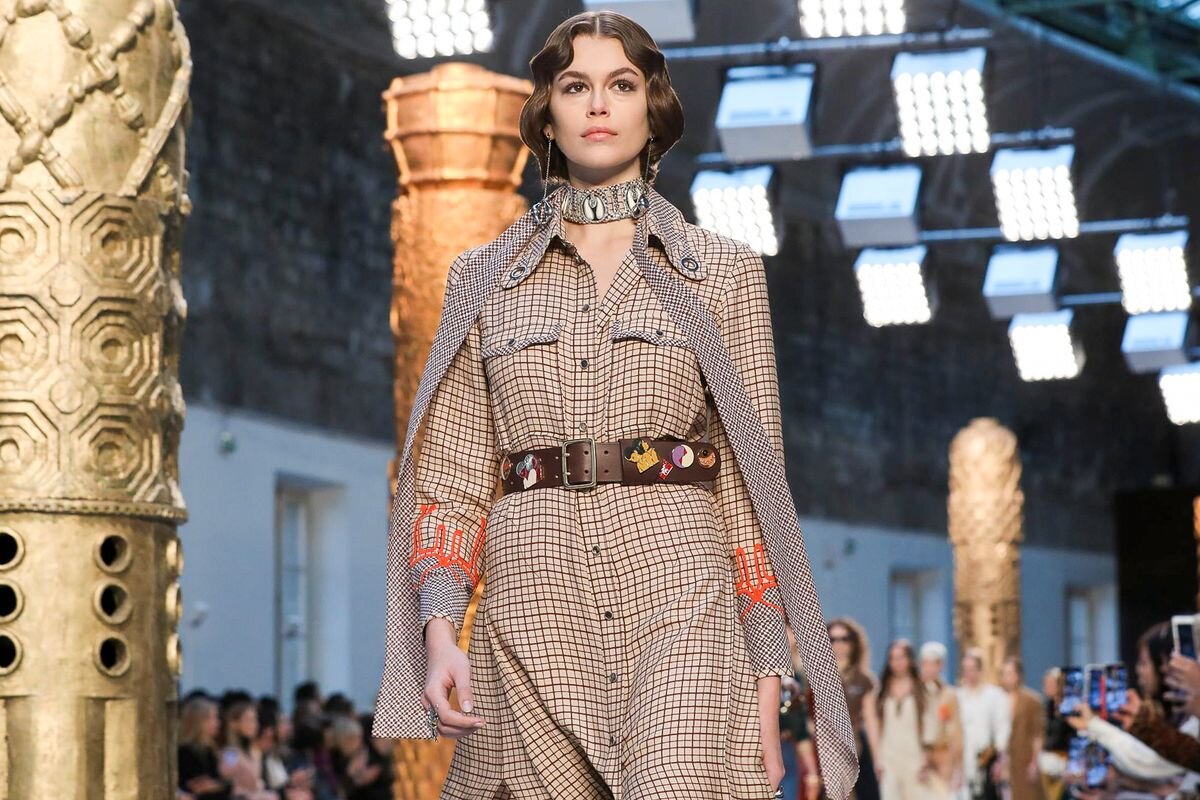
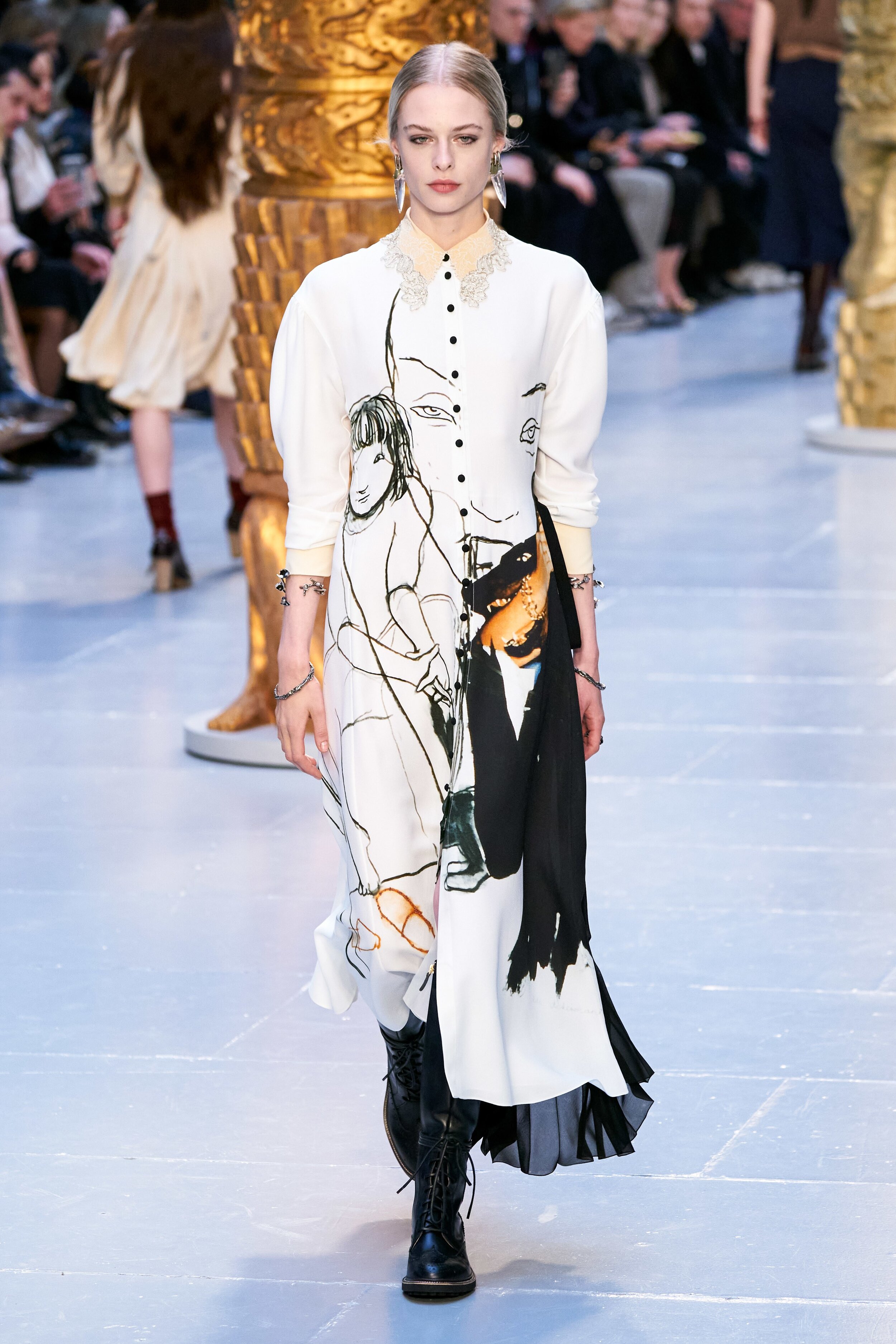
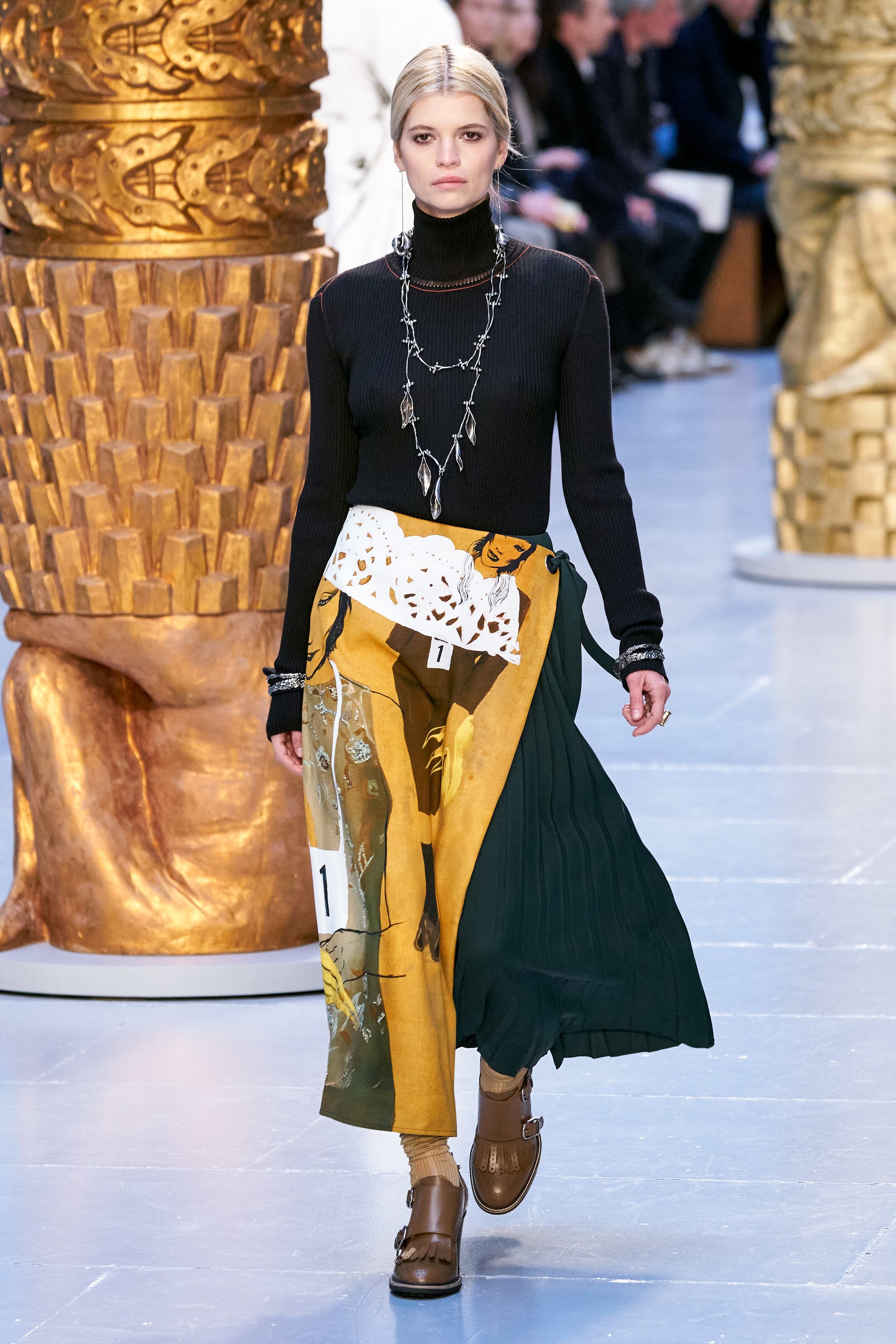
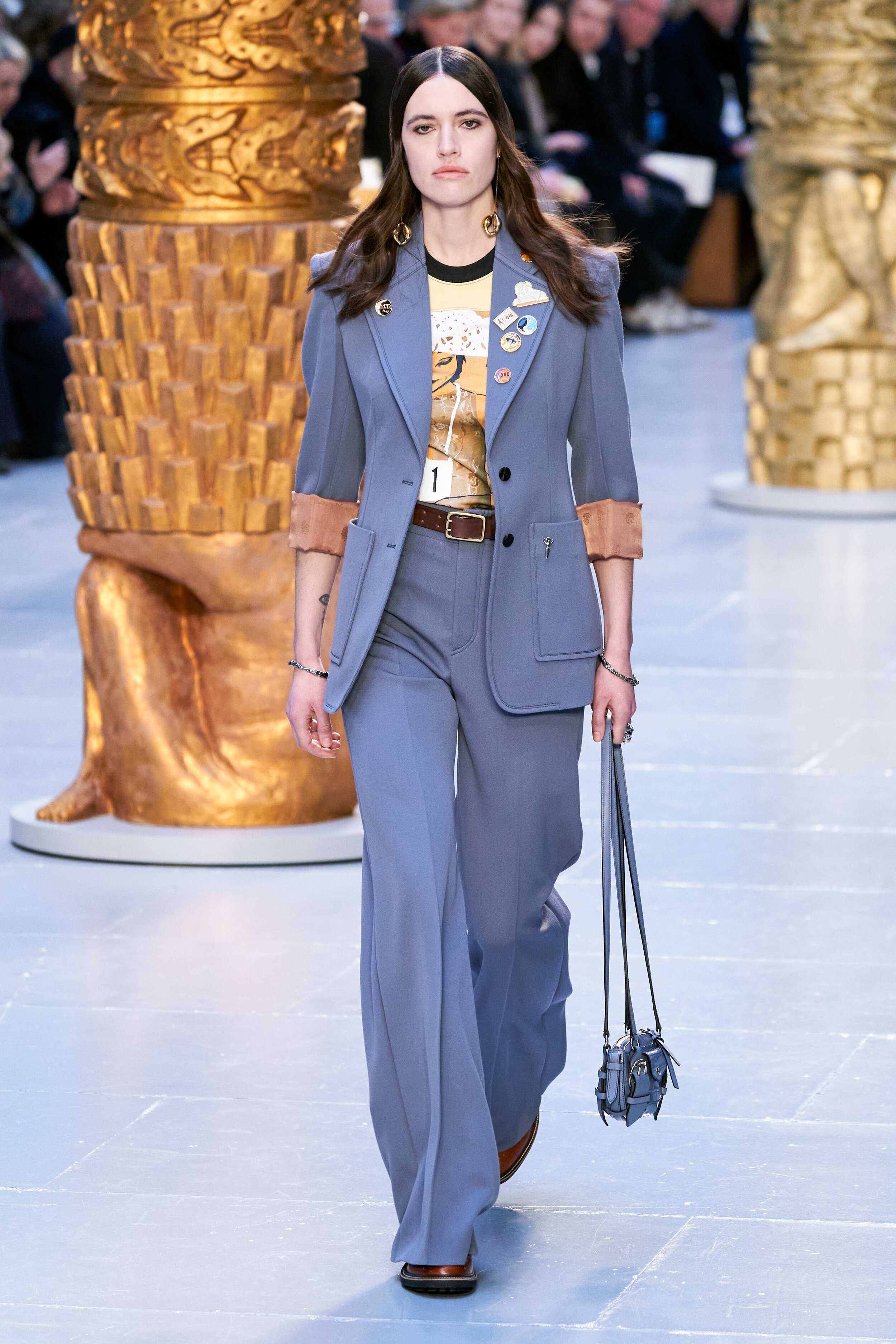
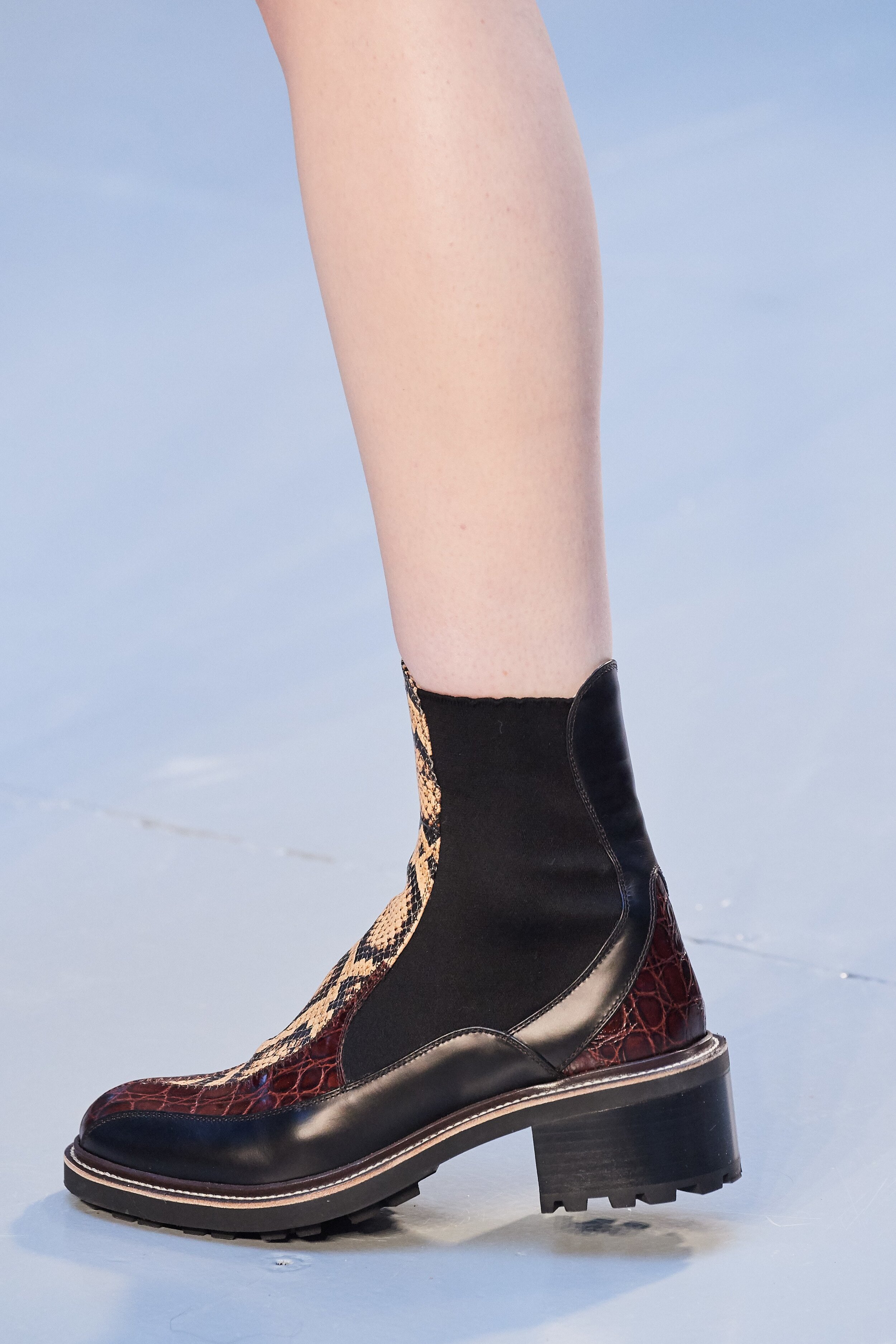
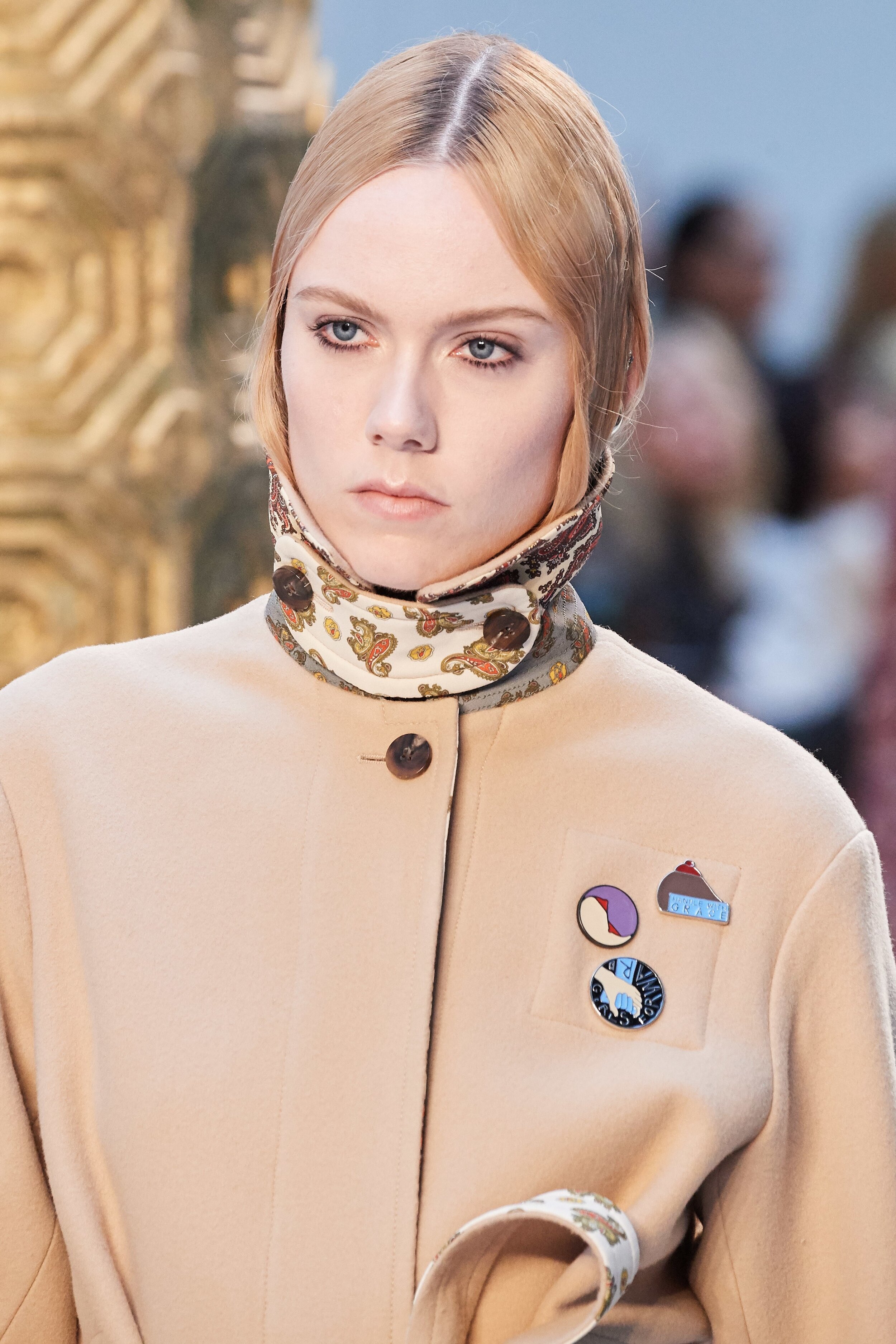
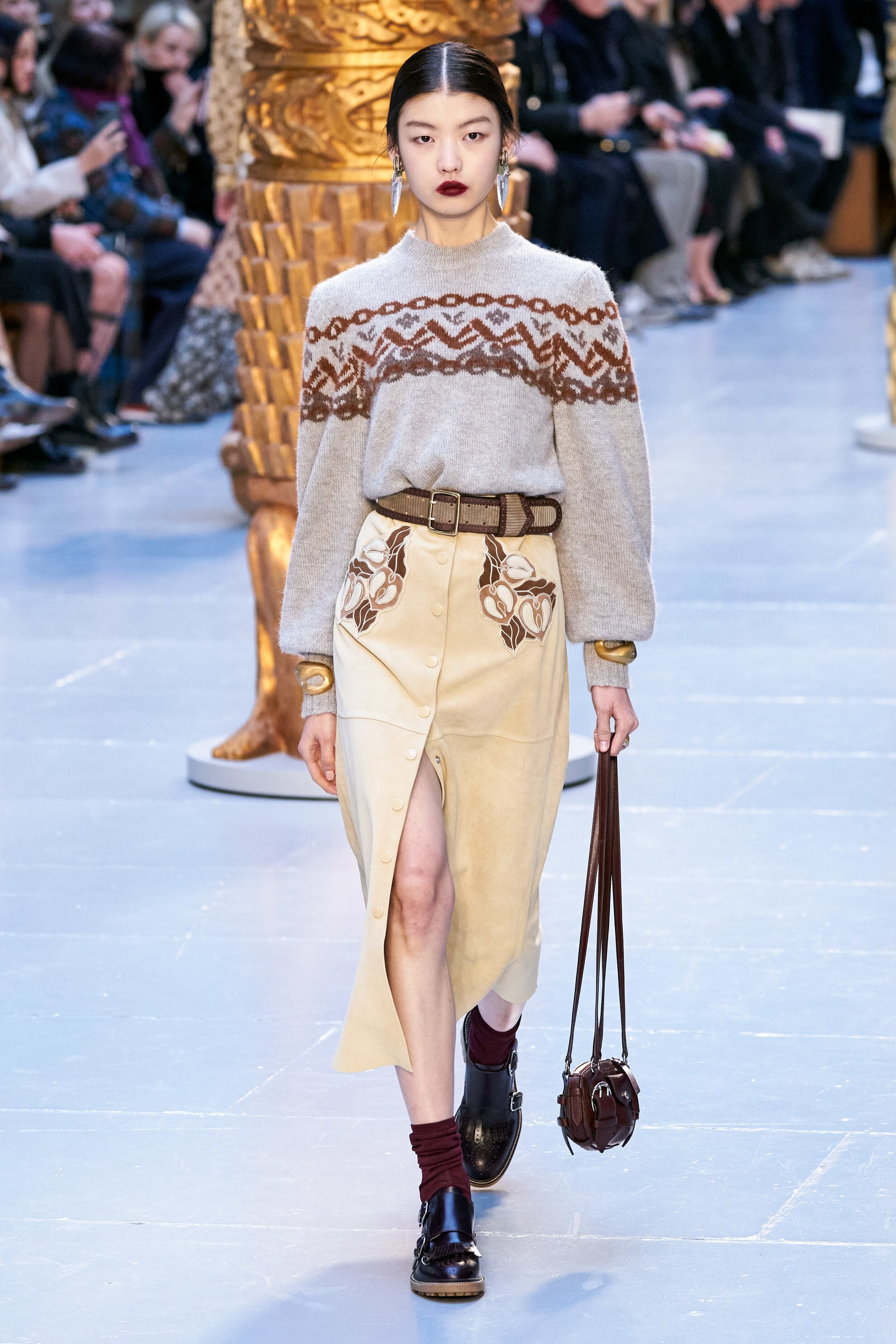
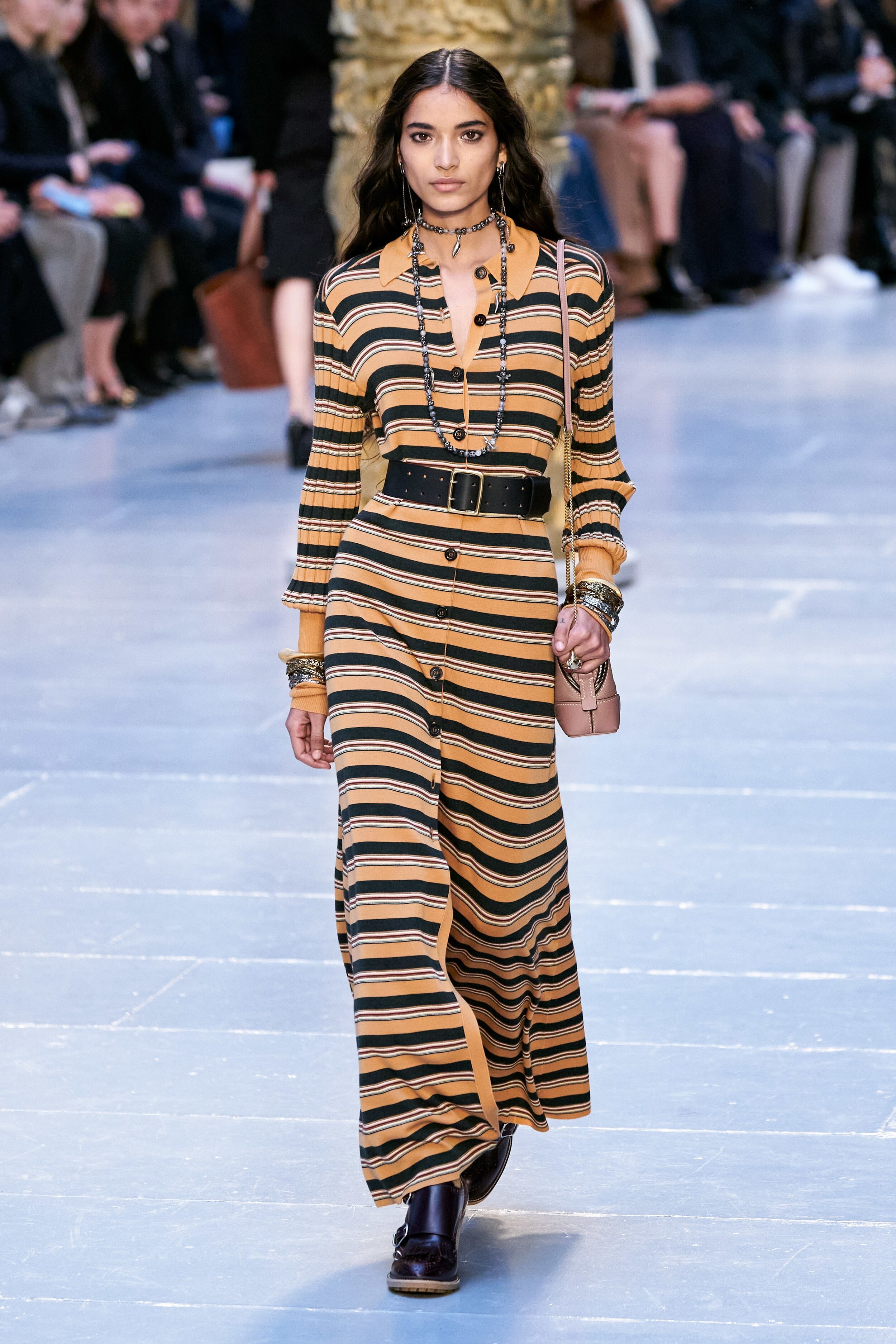
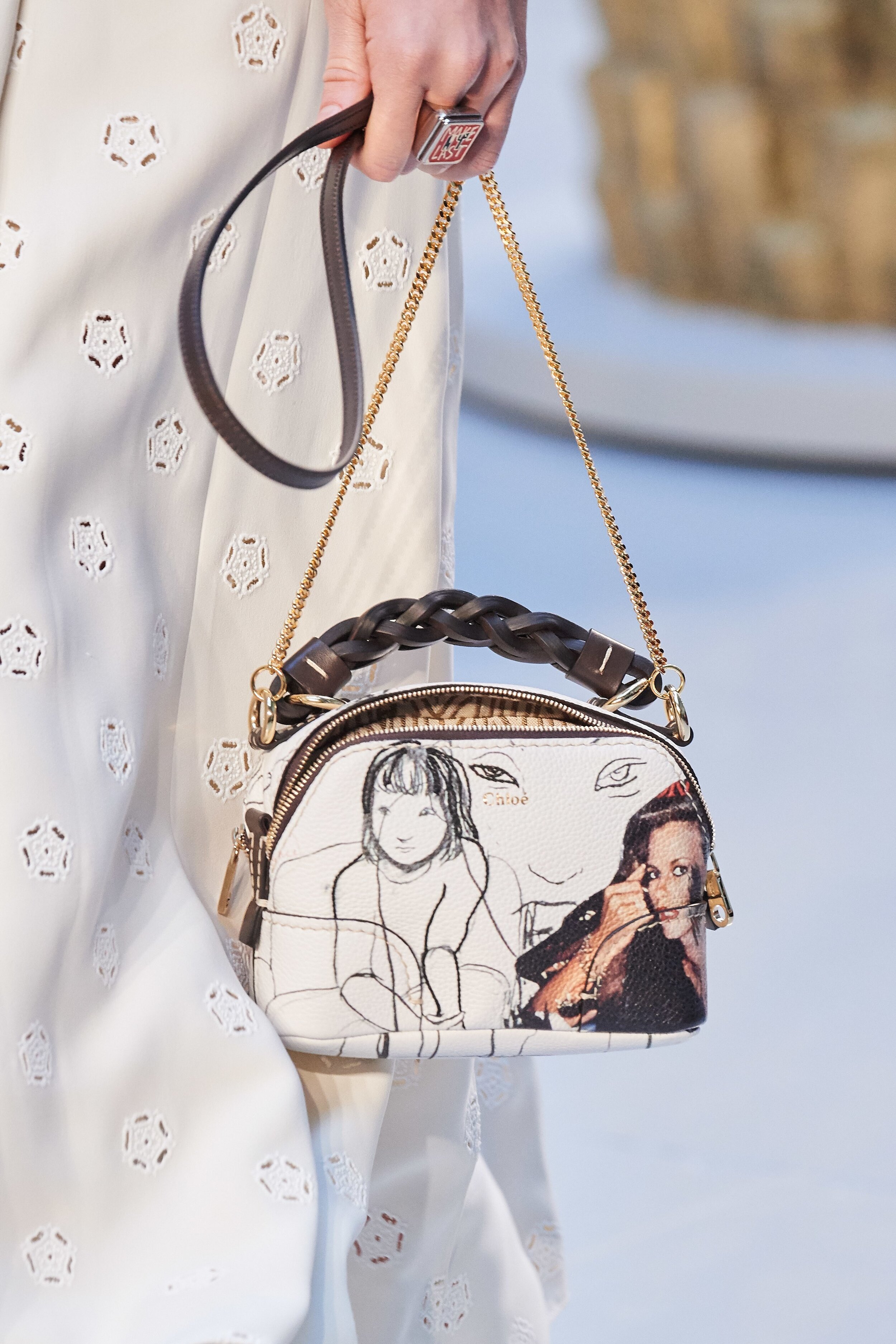
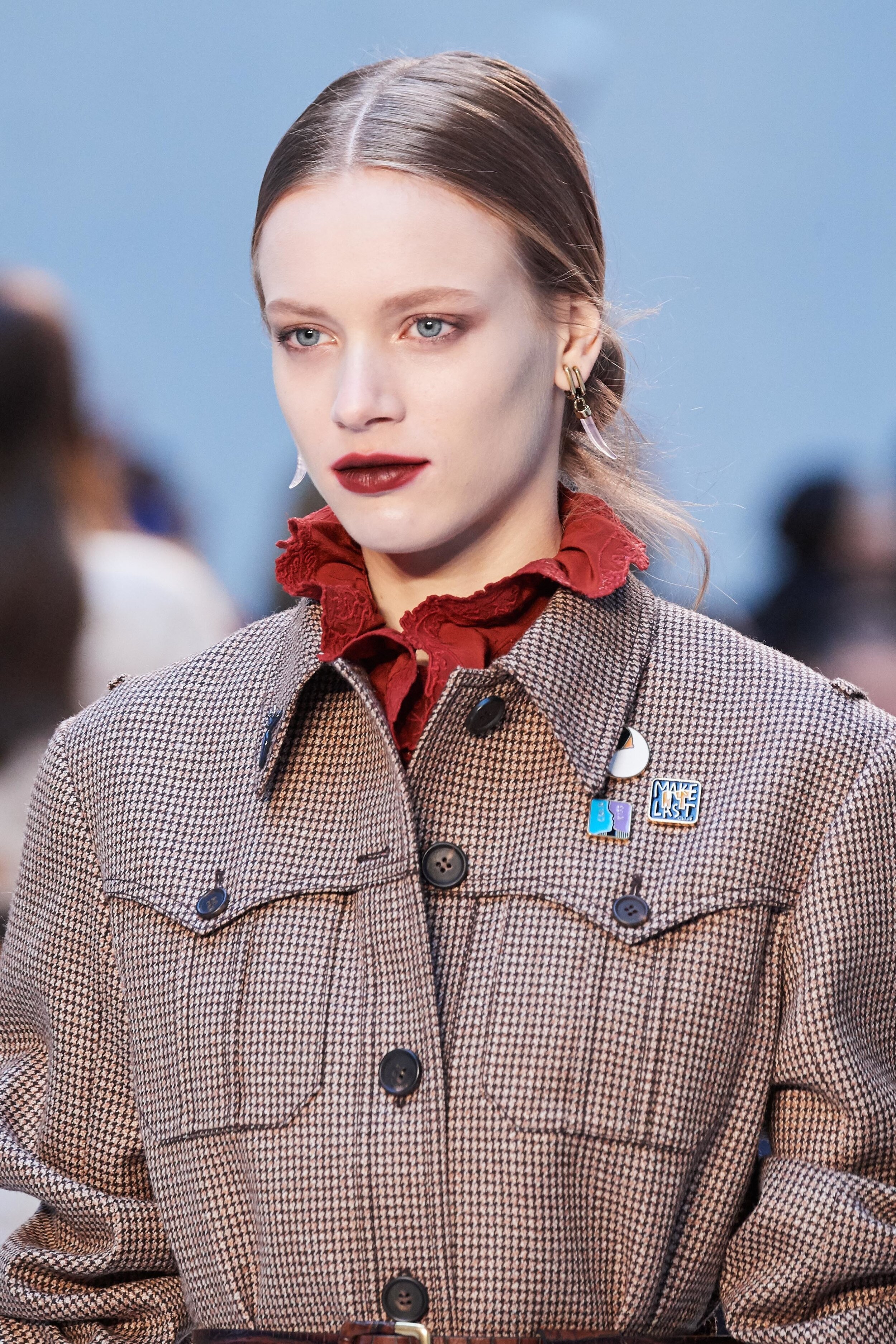
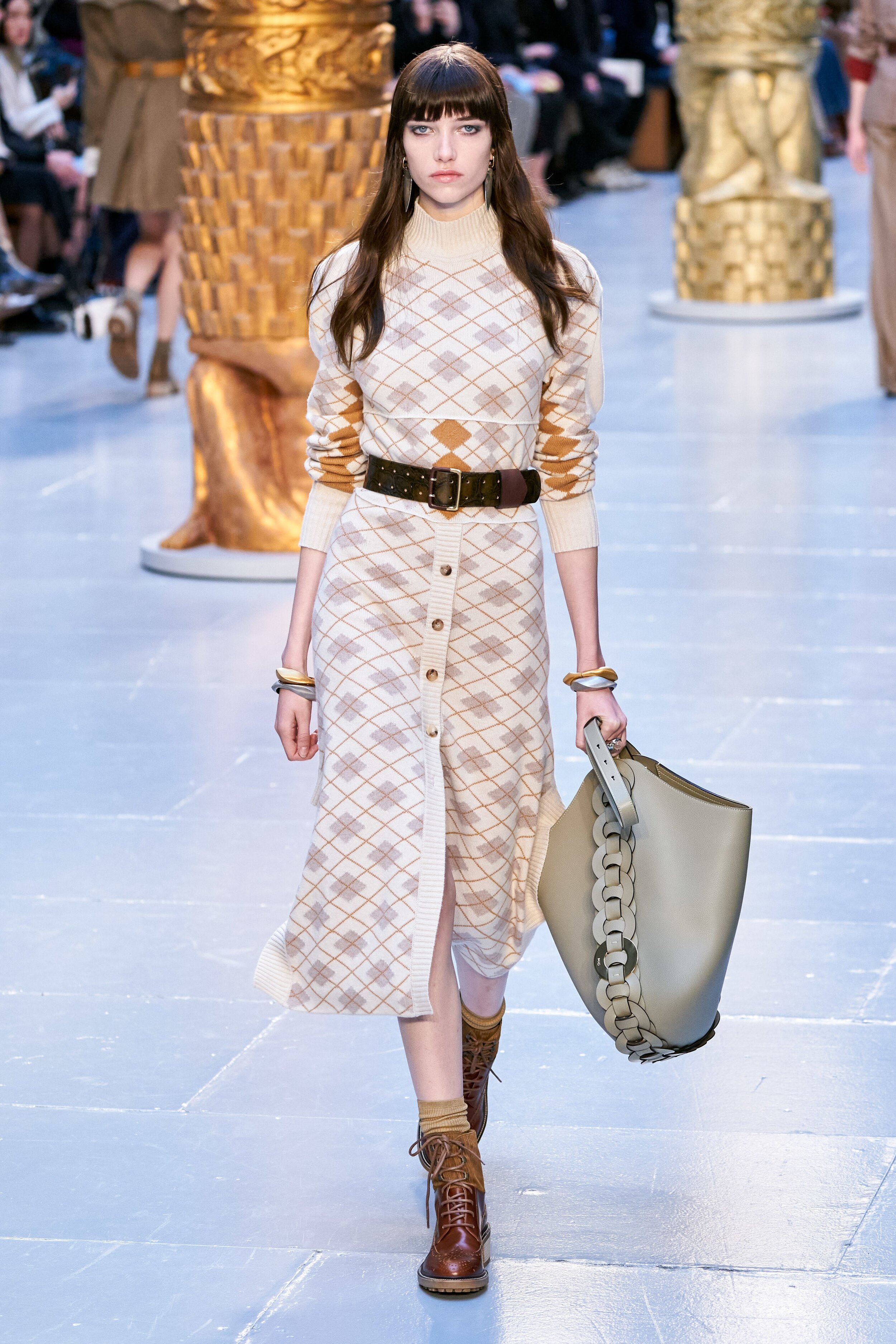
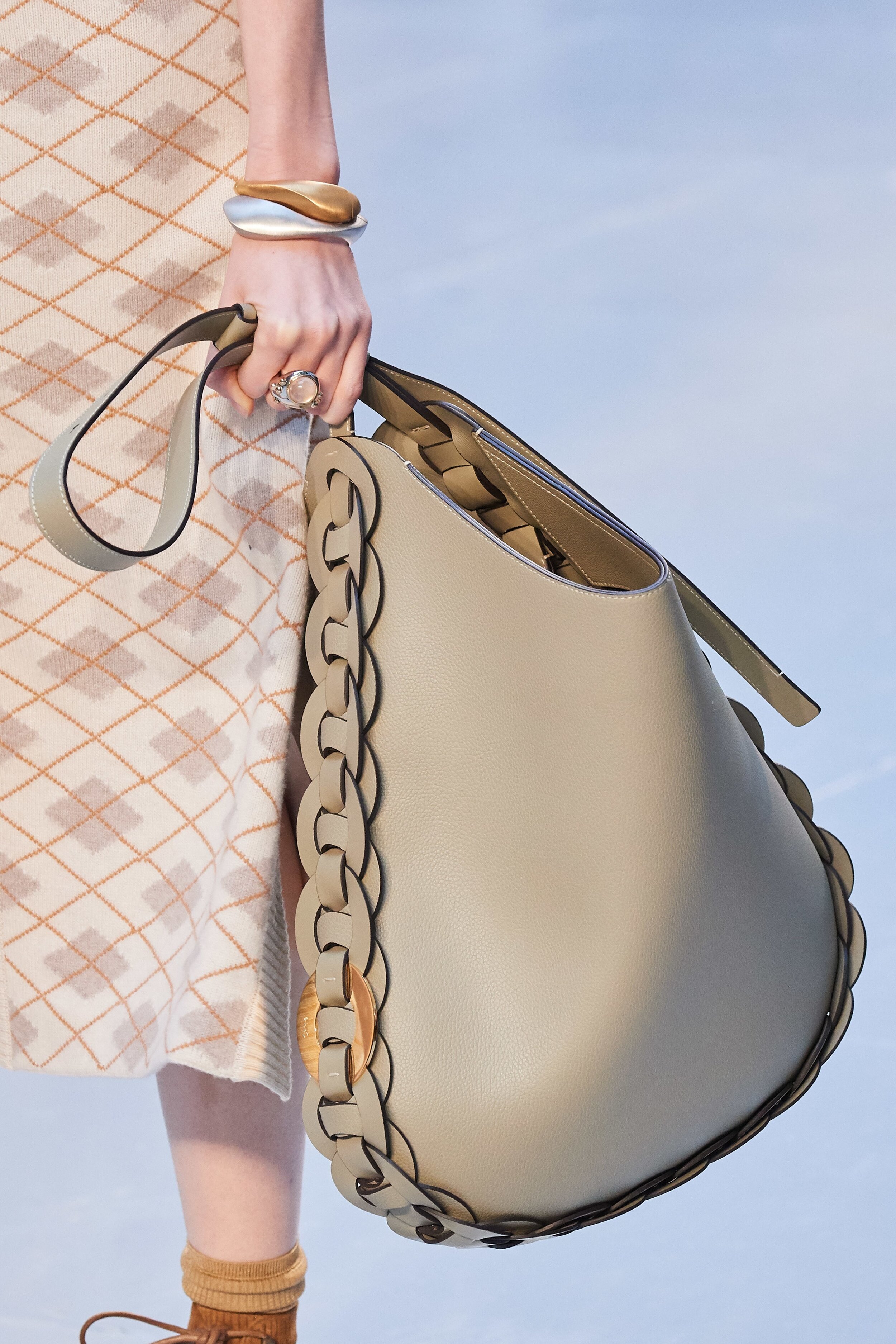
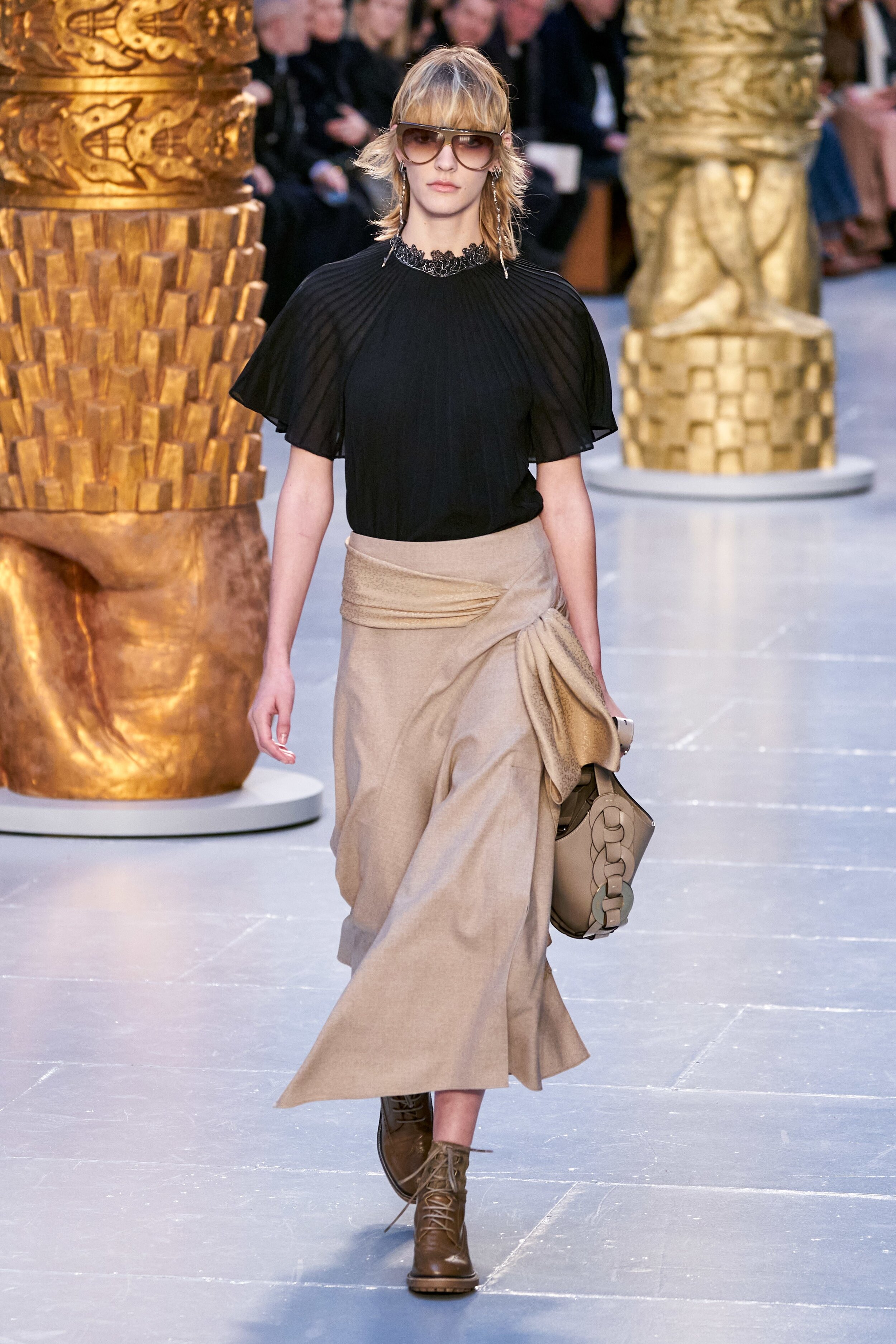
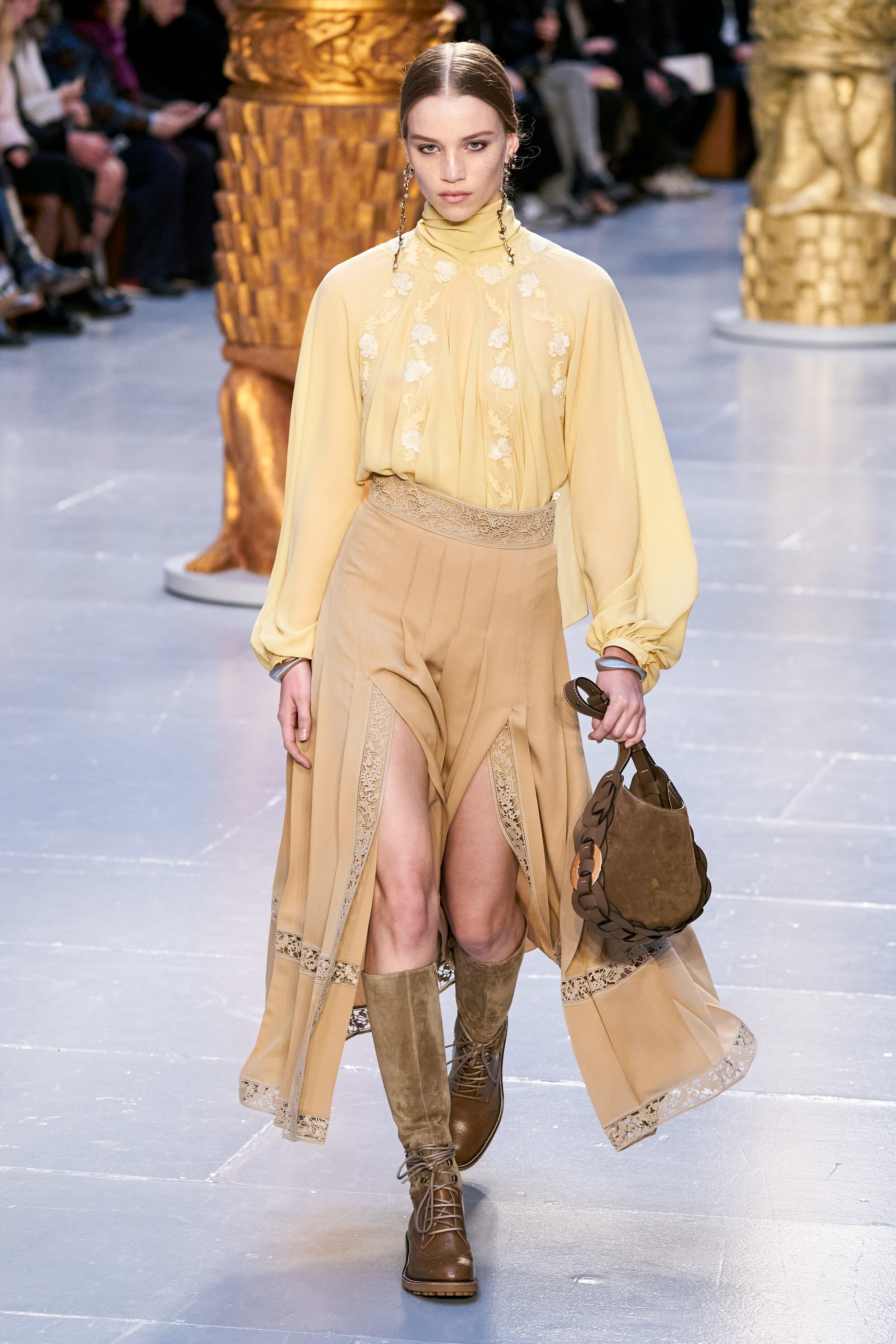
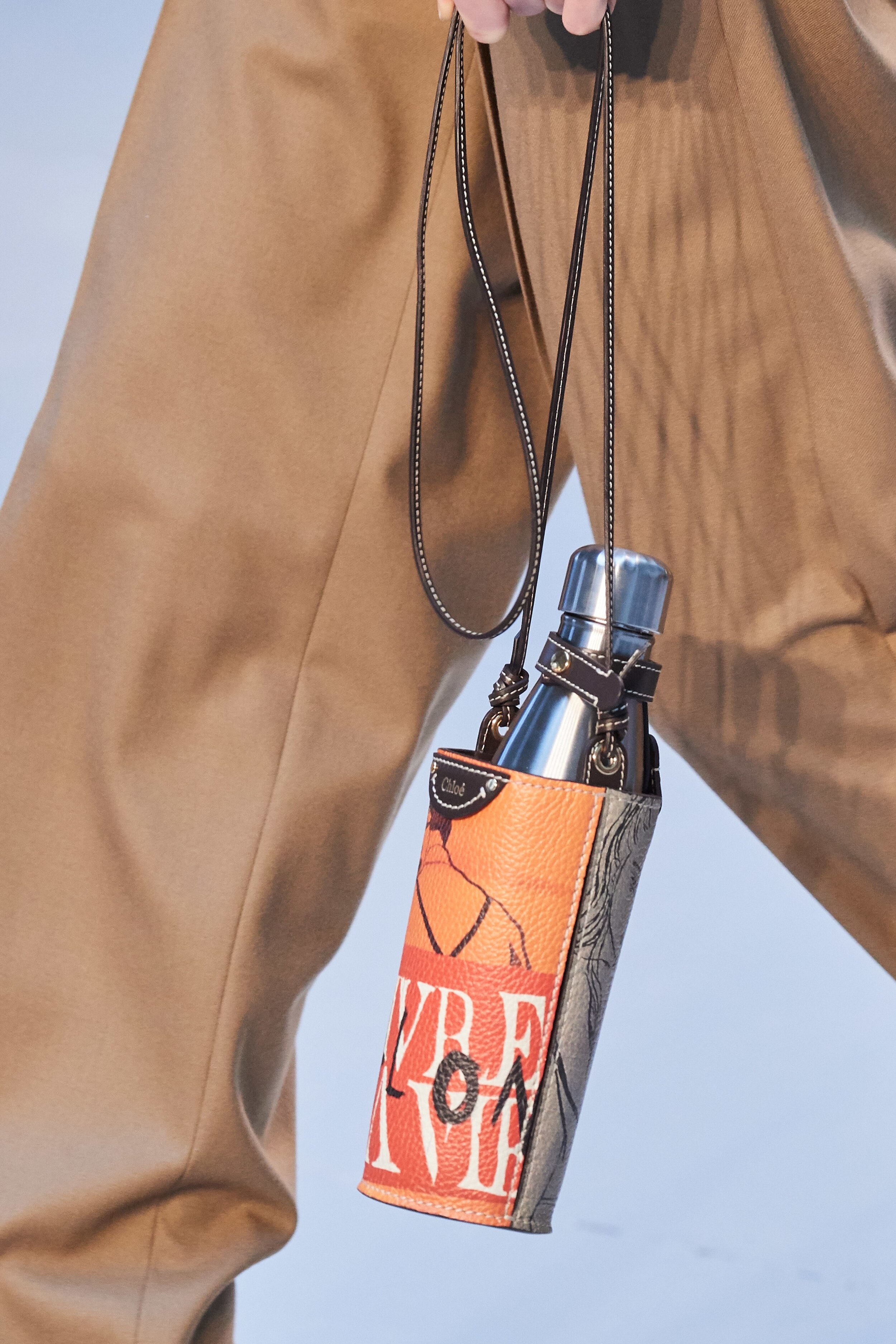
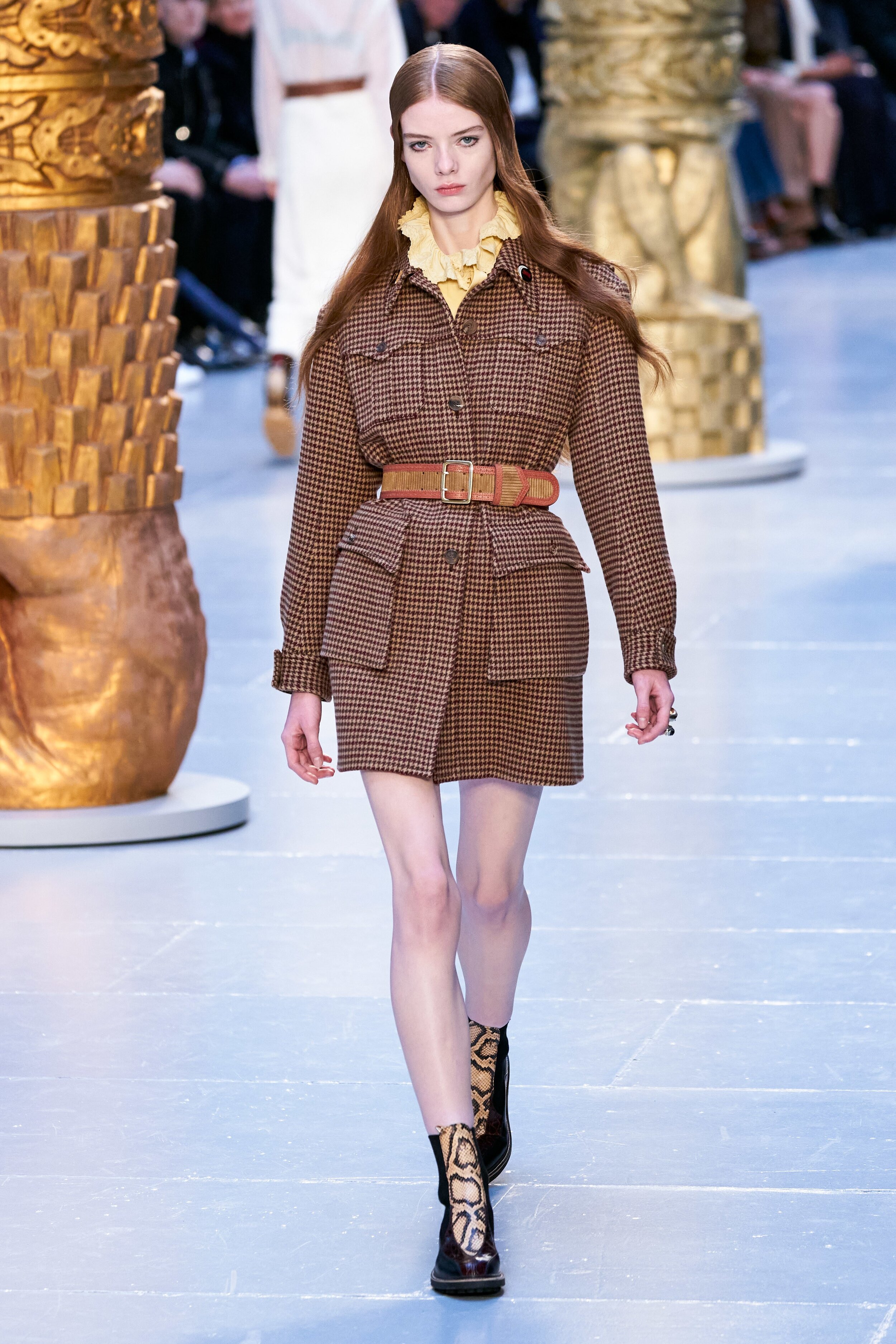
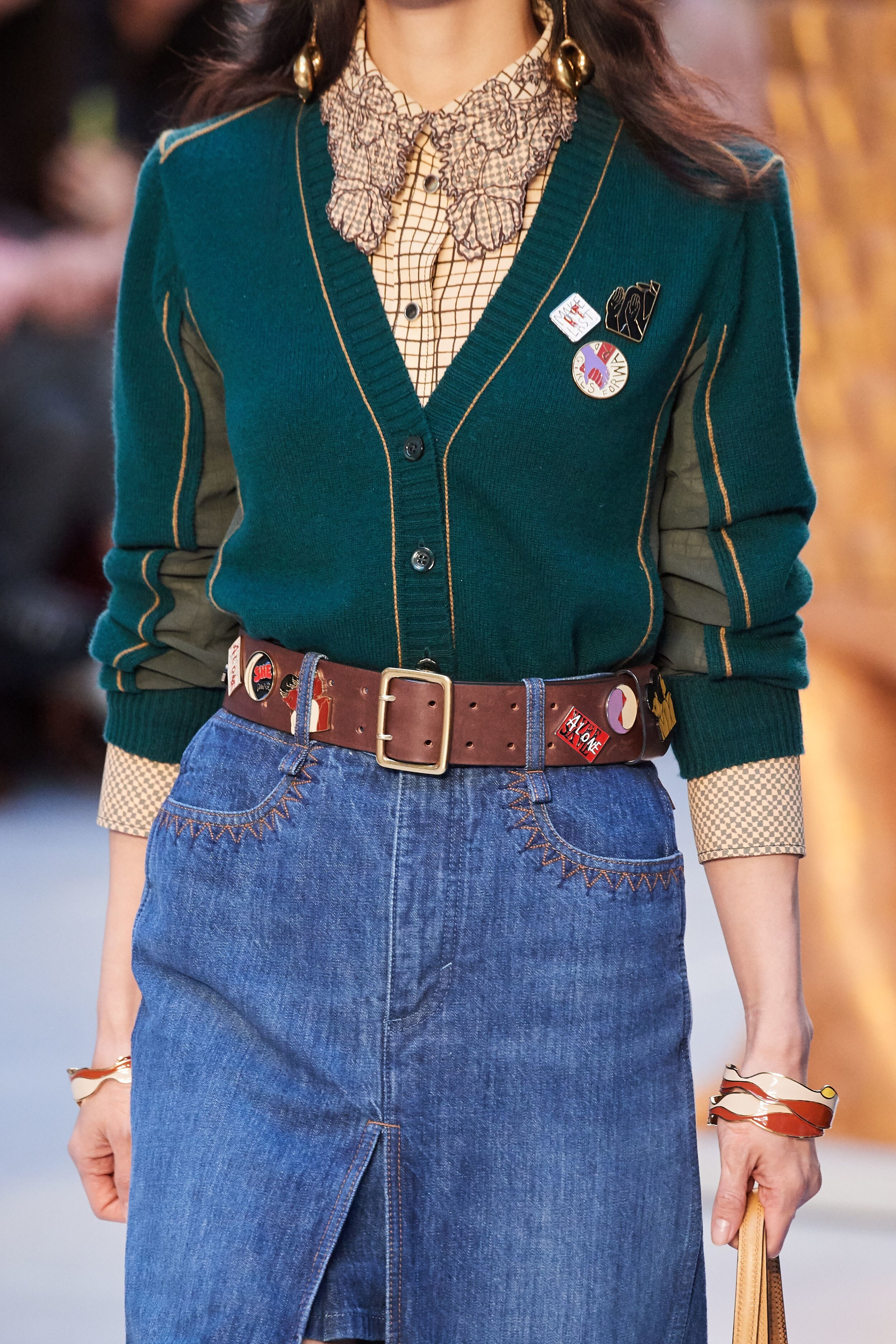


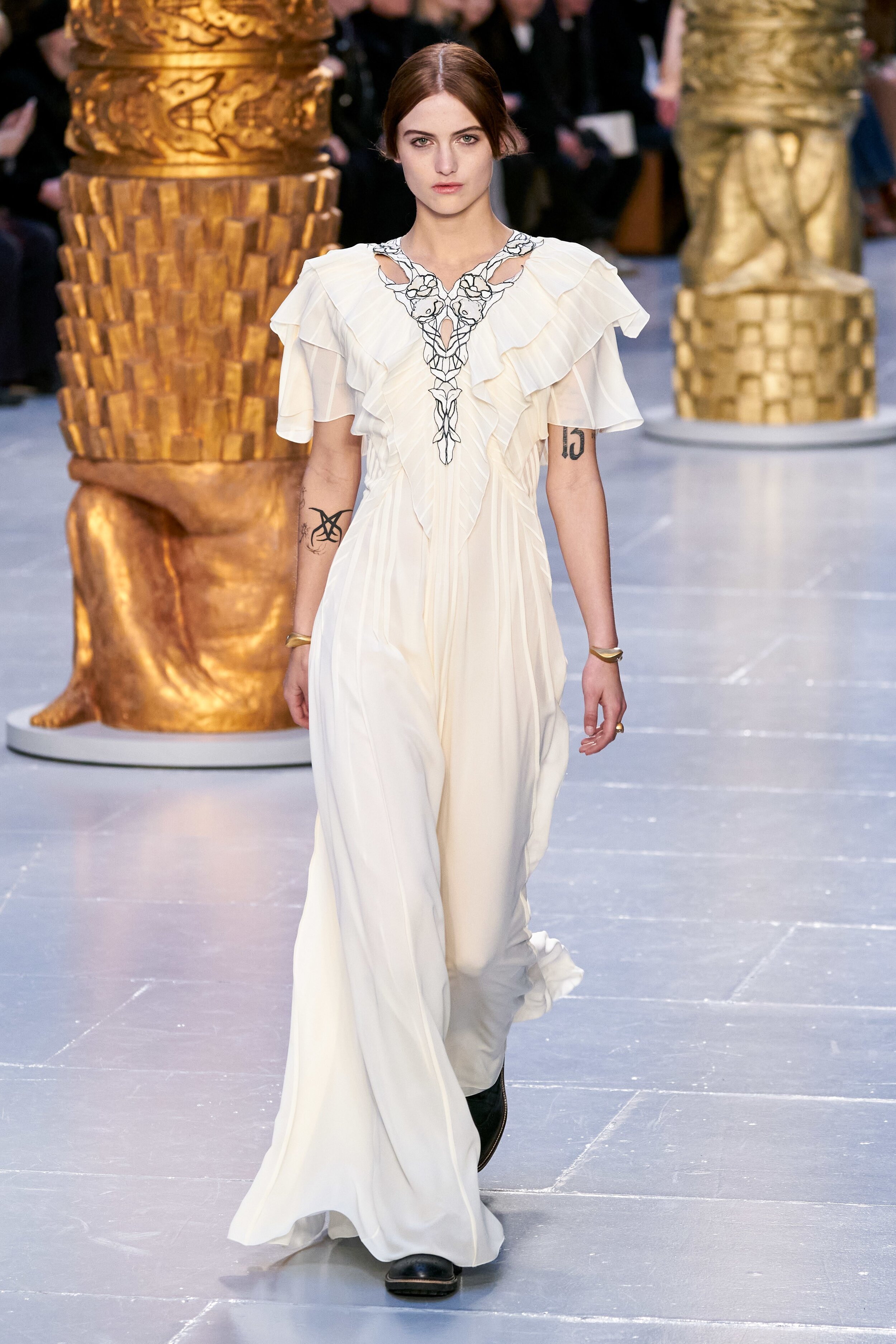










Why the American fashion capital and its millennial consumer seem to be obsessed with nostalgia, how The Row outdid itself again, and the controversial element in Raf Simons’s looks…